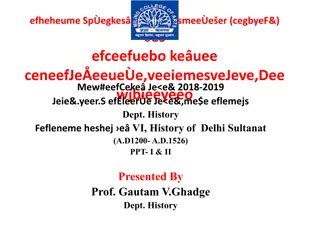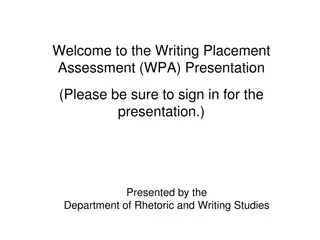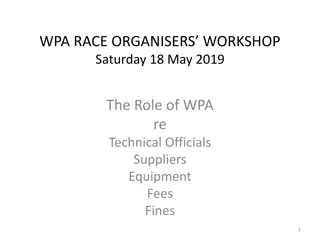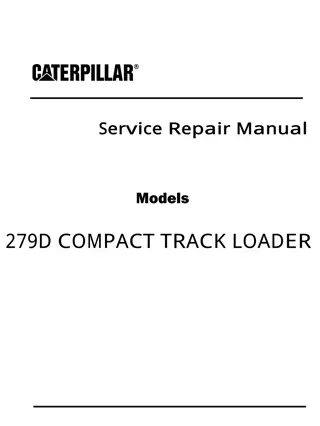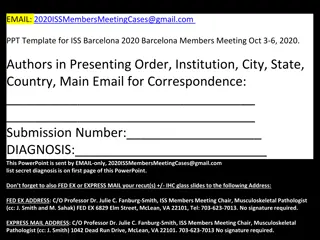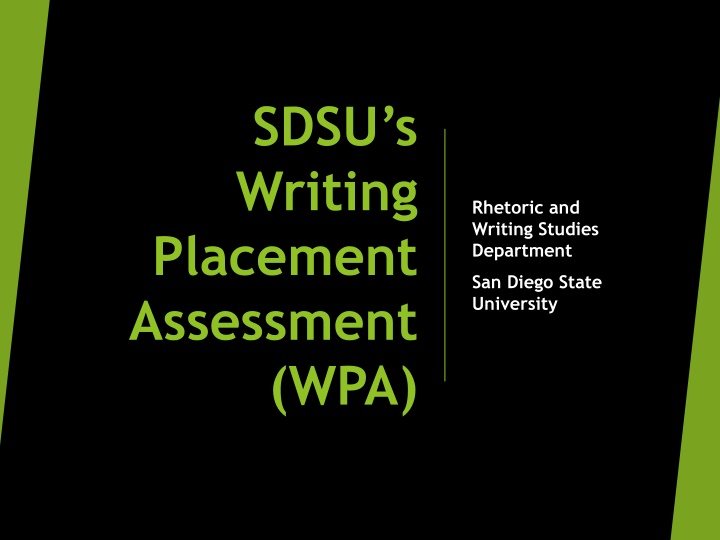
Understanding SDSU's Writing Placement Assessment (WPA)
Learn about the Writing Placement Assessment (WPA) by the Rhetoric and Writing Studies Department at San Diego State University. The WPA is a crucial tool for placing students in upper-division writing classes, ensuring they meet graduation writing requirements.
Download Presentation

Please find below an Image/Link to download the presentation.
The content on the website is provided AS IS for your information and personal use only. It may not be sold, licensed, or shared on other websites without obtaining consent from the author. If you encounter any issues during the download, it is possible that the publisher has removed the file from their server.
You are allowed to download the files provided on this website for personal or commercial use, subject to the condition that they are used lawfully. All files are the property of their respective owners.
The content on the website is provided AS IS for your information and personal use only. It may not be sold, licensed, or shared on other websites without obtaining consent from the author.
E N D
Presentation Transcript
SDSUs Writing Placement Assessment (WPA) Rhetoric and Writing Studies Department San Diego State University
What is the WPA? The WPA is a writing placement tool. It is a quick, simple tool for placing students in an upper division writing class. (In much of the rest of the CSU there is no placement tool and students automatically take an upper division course). It is part of the GWAR requirement, a CSU- wide mandated provision (GWAR = graduate writing assessment requirement ). It emerged out of input from many stakeholders employers, teachers, scholars, etc.
The CSU requires campuses to show their students are on track to write at the level appropriate for graduation. This has to be done before graduation. The CSU also wants students to have the opportunity to participate in writing-intensive classes. These can be in the students major (when offered) or can be one of a range of GE courses. Reports such as Academically Adrift suggest writing and reading-intensive classes with opportunity for feedback, revision, discussion, etc., produce key benefits that help students in their careers, personal and civic lives.
In summary - students take the WPA to show they are on track to write at the level appropriate for graduation AND are ready to take an upper division writing course. Roughly 80-85% of students who take the WPA are found to be on track. Some are ahead, and some need some more help.
The WPA emphasizes the ability to analyze and evaluate arguments Who takes the WPA? When?
Who takes the WPA and when? SDSU students take the WPA the semester they have achieved junior status (60 units). (Transfer students can take the WPA once they have received an offer of admissions.) Students place into one of three categories based on test results.
Note: the ~85% of students who score 8 are meeting expectations and are on track to write at the level expected at graduation. They are ready to take a writing intensive upper division course which will help them write at this level. They have not failed the test. The 5-8% of students who score 10 are already at the level expected at graduation.
More on the WPA What is the format for the WPA? Who scores the WPA? How are the essays scored?
Identify and provide a brief explanation of the author s argument; Identify two persuasive strategies that the author uses to support his or her argument and analyze how those strategies might persuade the reader to support the claim; The WPA prompt Discuss the assumption(s) on which the argument is based; Evaluate the extent to which the reader would find the argument convincing.
What are students being asked to do? Explain the point of the author s argument. Explain Explain how the author is using rhetorical strategies to persuade an audience. Explain Explain the underlying assumptions of the author s argument. Explain Most important: analyze and evaluate the effectiveness of these components. Analyze and evaluate
The reading (typically 2 pages) is usually an editorial selected from newspapers and magazines like the Los Angeles Times, Forbes, Wall Street Journal, etc. What is the reading like? (So one way of practicing is to read op-eds in these publications and analyze them).
Faculty from across the campus are WPA readers. Most of the readers are from the Department of Rhetoric and Writing Studies. Who reads the WPA? Two independent readers score each exam. Scores are from 2-5 each.
Using holistic scoring criteria, evaluators score essays on the writer's ability to analyze a written argument; to develop and organize ideas; to support these ideas with evidence or specific examples; to understand the essay's intended audience; to employ language skillfully; and to demonstrate appropriate paragraphing, sentence structure, grammar, punctuation, and spelling. How are essays scored?
What is the pass rate? Through June 2017, 9 percent of students who took the exam needed two courses to clear the GWAR requirement (RWS 280 or Ling 281 and an upper division writing course). 81 percent demonstrated they were on track to take an upper division writing course. They needed one class to satisfy the GWAR. 10 percent were ahead of expectations and already satisfied the GWAR.
How does the WPA relate to SDSU s student learning goals? The WPA maps onto the RWS 100 and 200 student learning outcomes. The WPA helps student s fulfill SDSU s general education goals in Communication and Critical thinking.
Analyze a variety of texts to demonstrate rhetorical knowledge of an argument s project, claim, audience, genre, rhetorical appeals, rhetorical strategies (including evidence), and assumptions. RWS 100 Student Learning Outcomes Evaluate arguments and their evidence through a process of critical inquiry. Locate, evaluate, and incorporate material from sources into their writing projects.
Where can I find out more about the WPA? WPA Web Page http://wpa.sdsu.edu/ There are videos, sample exams, criteria, sample scored student exams, definition of terms, etc.















